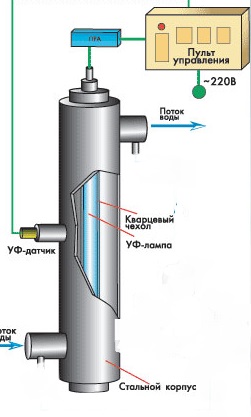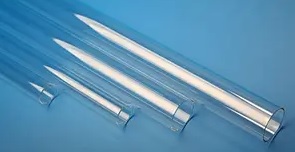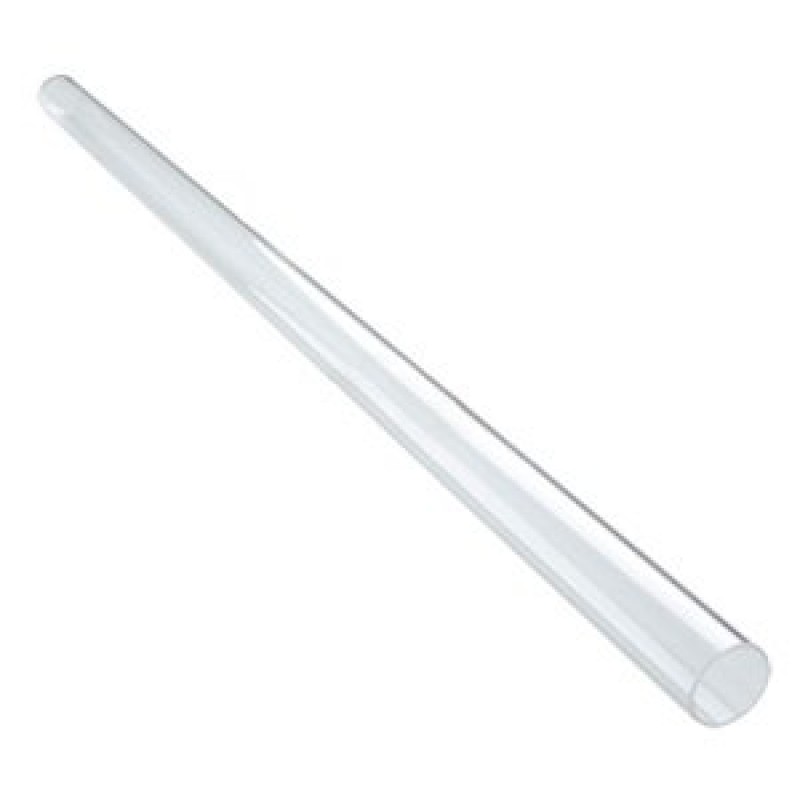
I am a returning customer
If you already have an account with us, please login at the login form.
Thank you for registering with Waterboss Киев Украина!
You will be notified by e-mail once your account has been activated by the store owner.
If you have ANY questions about the operation of this online shop, please contact the store owner.
You have been logged off your account. It is now safe to leave the computer.
Your shopping cart has been saved, the items inside it will be restored whenever you log back into your account.

Quartz covers for UV water disinfection systems
The quartz cover for the UV lamp acts as a  protective barrier between the UV lamp and the water flow. Visually, the quartz cover for the UV lamp is a glass tube, slightly longer than the UV lamp. For the correct selection of a quartz drain for a UV lamp, when replacing, it is necessary to know the manufacturer and model of the UV disinfection system. The service life of a quartz drain is from 1 to 5 years and depends on the quality of the water supplied to the UV disinfection system. How to check the quartz cover for a UV lamp for operability is quite simple: turn off the power, dismantle the cartridge and lamp together with grounding, drain the water from the UV disinfection system completely, remove the back plug, then dismantle two seals (new ones come with a lamp or a cover) and finally, take out the quartz drain, wipe it well. There should not be any deposits or turbidity, and there should not be any cracks, then the quartz cover for the UV lamp can be used further, otherwise, we recommend replacing it. There is another question why it is necessary to change the quartz drain every five years, even if it is in perfect condition, it seems that the glass does not deteriorate. It should be taken into account that the quartz cover for the UV lamp experiences constant thermal deformation loads: on the one hand, the UV lamp heats it up, and on the other hand, the water cools it, so there is a temperature difference between the inner and outer walls, which is why thermal deformation occurs, and then destruction.
protective barrier between the UV lamp and the water flow. Visually, the quartz cover for the UV lamp is a glass tube, slightly longer than the UV lamp. For the correct selection of a quartz drain for a UV lamp, when replacing, it is necessary to know the manufacturer and model of the UV disinfection system. The service life of a quartz drain is from 1 to 5 years and depends on the quality of the water supplied to the UV disinfection system. How to check the quartz cover for a UV lamp for operability is quite simple: turn off the power, dismantle the cartridge and lamp together with grounding, drain the water from the UV disinfection system completely, remove the back plug, then dismantle two seals (new ones come with a lamp or a cover) and finally, take out the quartz drain, wipe it well. There should not be any deposits or turbidity, and there should not be any cracks, then the quartz cover for the UV lamp can be used further, otherwise, we recommend replacing it. There is another question why it is necessary to change the quartz drain every five years, even if it is in perfect condition, it seems that the glass does not deteriorate. It should be taken into account that the quartz cover for the UV lamp experiences constant thermal deformation loads: on the one hand, the UV lamp heats it up, and on the other hand, the water cools it, so there is a temperature difference between the inner and outer walls, which is why thermal deformation occurs, and then destruction.


